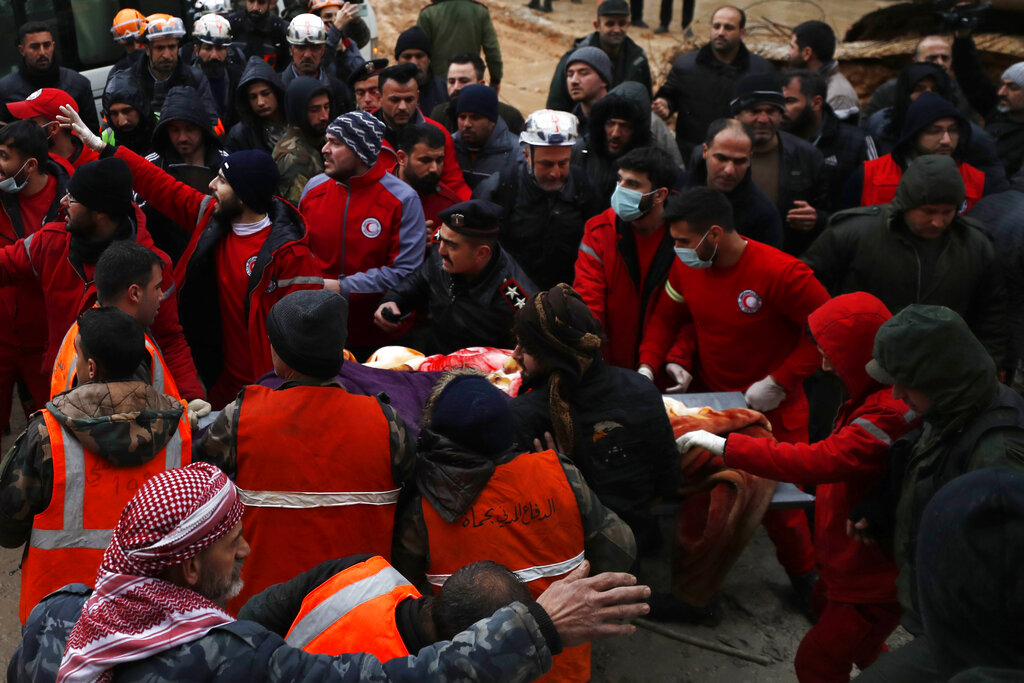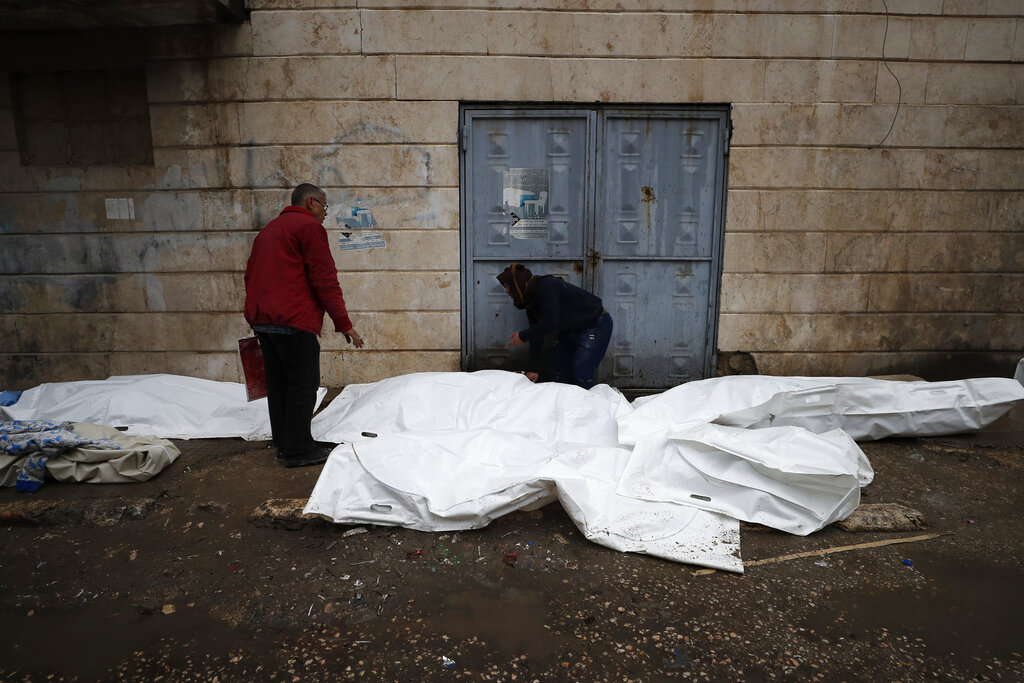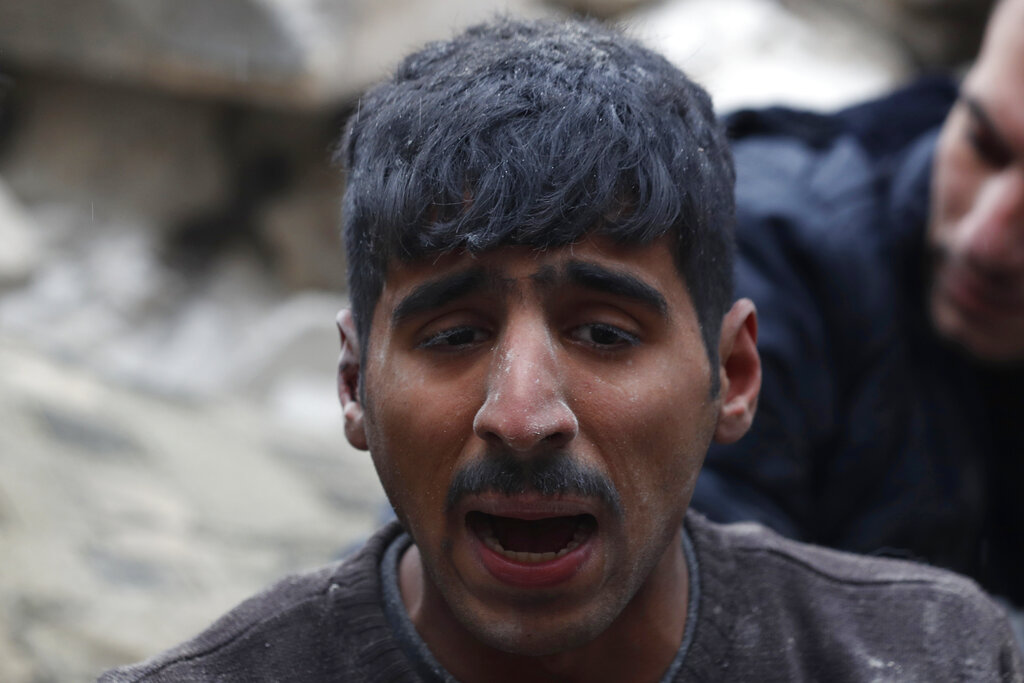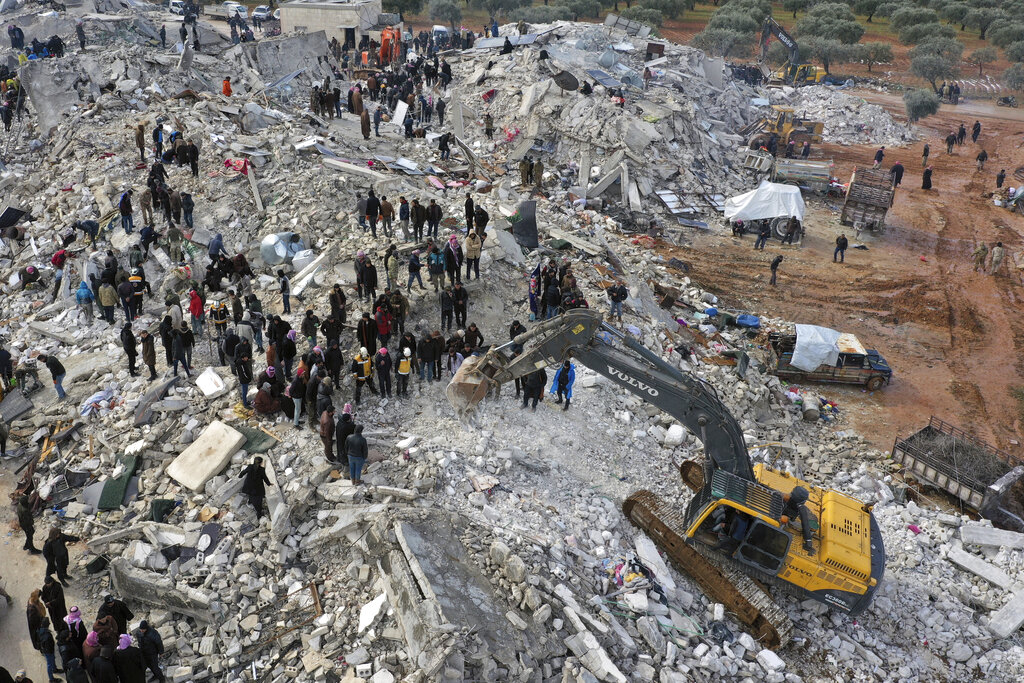
Again the Syrians heard the rumble and rumble of collapsing buildings, again they saw the dust rising from the piles of gray concrete and metal where houses and offices once stood. Once again, people dug into the ruins with their hands, hoping, often in vain, to save people close to them.
In northwest Syria on Monday, apartment buildings, shops and even entire neighborhoods were destroyed in seconds by a powerful earthquake, setting scenes all too familiar for a region devastated by more than a decade of civil war.
Millions of people displaced by years of fighting have taken refuge in the north, the only place that remains outside government control. They took refuge in tents, in ancient ruins, and in any other place they could reach after the destruction of their dwellings.
The economic collapse caused by the war left many of them unable to eat properly. The fuel crisis this winter left them shivering in their beds without warmth. Due to the damaged infrastructure in Syria, thousands of people have contracted cholera in recent months. The destruction of hospitals in the country means that many of them cannot receive minimal medical care.
And then there was an earthquake on Monday.

“How can we afford all this?” said Ibrahim al-Khatib, a resident of Taftanaz in northwestern Syria, who jumped out of bed early in the morning and rushed outside like his neighbors. “Russian airstrikes, Bashar al-Assad attacks and today’s earthquake?”
Southern Turkey and much of northwestern Syria were hardest hit, with an estimated 5,000 deaths in those two countries. In Syria, where more than 1,450 people died, entire neighborhoods were razed to the ground at the same time, causing in a matter of seconds the destruction that the population is accustomed to experiencing from air strikes, from endless shells.
A hospital near Idlib “was bringing in new bodies every minute,” Dr. Osama Shalum said. The boy, estimated to be about 6 years old, died while a doctor was performing cardiopulmonary resuscitation. “I saw the life leave his face,” she said.
“We kept looking in the sky for fighters,” Dr. Shalum said. “My mind was deceiving me, it was telling me it was war again.”
Mark Kay, spokesman for the International Rescue Committee, has repeatedly called, along with the United Nations and aid agencies, for additional support for post-earthquake Syria. “Anywhere else in the world, this would be an emergency,” he said. “What we have in Syria is an emergency within an emergency.”

Much of Syria still bears the scars of a conflict that has been in a fragile truce since early 2020. Faced with sanctions, a lack of rebuilding aid from international donors, and a home economy…in ruins, recovery has been fragmented and limited.
The payoff for war – massive destruction, a severe economic crisis, a collapse in the currency – will make it even more difficult for all parties to respond to the call for help.
Although emergency crews in the affected area responded quickly, digging through the ground in frost and rain, the scale of the destruction was too great even for rescuers accustomed to building collapses.
There were not enough rescue equipment for a large number of people trapped under the rubble. Buildings that survived the massive initial 7.8 quake have collapsed in aftershocks, reflecting the fragile state of Syria’s infrastructure after years of airstrikes and artillery shelling.
People in Aleppo said people, too afraid to stay in buildings that could collapse, set up camps in cars in open areas such as football fields.

The northwestern corner of the country, along the border with Turkey, is controlled by Turkish-based opposition groups and is home to about 4.6 million people. Tens of thousands of people in the region have recently been left homeless, said Raed Saleh, director of the White Helmets, a civil defense and rescue group that works in non-government-controlled areas.
Displaced persons camps were overcrowded, already housing some of the 2.7 million people who had arrived in the northwest from other parts of the country.
The scenes from the hospitals were reminiscent of scenes in the midst of hostilities: the wards were overflowing with patients sharing beds, and doctors were treating the wounded at every corner.
Although heavy fighting has ended, the healthcare system has yet to recover. According to the International Rescue Committee, only about 45% of Syria’s pre-war medical facilities are currently functioning.
So far, no major effort has been made to repair the damaged Syrian infrastructure, which the government attributes – at least in part – to Western sanctions.
Across the country, people are in such dire straits that it is reminiscent of some of the worst phases of the conflict that President Assad began when he tried to brutally crack down on massive anti-government protests in 2011, inspired by the Arab Spring uprisings that swept the world. region season. Then his Russian allies finally intervened militarily, tipping the scales in his favor.

This winter, Syrians burned rubbish and peanut shells to keep warm, showered only once a week and stayed at home, postponing school and work due to lack of fuel. Some forgot about hot dishes. Others sold their winter coats to pay for food, any food.
In some places, electricity has been cut to less than an hour a day, rendering electric heaters and mobile phones useless. Water pumps on farms stopped, causing food prices to rise. Pumps were also not working in apartment buildings, causing people to drink water from contaminated sources.
According to the World Bank, the gross domestic product fell by more than half between 2010 and 2020, and in 2018 Syria was reclassified as a low-income country. The coronavirus pandemic has caused even greater economic hardship and additional strain on the country’s healthcare system.
Schools closed or their students stayed at home because they couldn’t turn on the lights or heat the classrooms. Internet and mobile communications were disabled. Government offices were closed for two Sundays in December to save fuel. Dozens of employees in the Tartus area, on the Mediterranean coast, recently quit because they had to spend their wages to get to work, according to a local journalist who did not want to be named for fear of government reprisals.

The journalist, his wife and their three children went to bed as early as possible, around 6:00 pm, just to keep warm.
Fuel shortages, combined with Syria’s crumbling water infrastructure, triggered another crisis last year: the cholera outbreak. By mid-December, the United Nations said there were more than 60,000 suspected cases of cholera in the country.
Access to clean water has been so limited that some Syrians have reported not washing their hands to conserve drinking water or drinking directly from the polluted Euphrates River, according to a recent study in northeast Syria by REACH, a humanitarian group that has focused on collecting data. Wallets were so empty that 82% of respondents said most people couldn’t afford a bar of soap.
“Public services were already on the verge of collapse after 12 years of crisis,” said Emma Forster, head of policy and communications at the Norwegian Refugee Council in Damascus. “They say that this is already the worst year, worse than the war years.”
Source: Kathimerini
Anna White is a journalist at 247 News Reel, where she writes on world news and current events. She is known for her insightful analysis and compelling storytelling. Anna’s articles have been widely read and shared, earning her a reputation as a talented and respected journalist. She delivers in-depth and accurate understanding of the world’s most pressing issues.